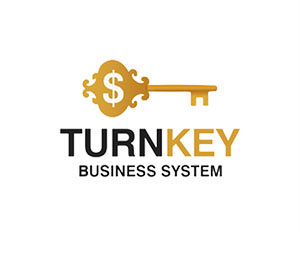Trump Proposes 100% Tariff on Foreign-Made Chips: Strategic Move or Economic Risk?

Trump Proposes 100% Tariff on Foreign-Made Chips: Strategic Move or Economic Risk?
Donald Trump has announced a potential 100% tariff on imported semiconductors not manufactured in the United States.
This bold policy, aimed at reshoring chip production, comes amid growing national security concerns and intense global competition in the semiconductor and AI sectors. Here's what this move could mean for the U.S. tech landscape, chipmakers, and global supply chains.
This bold policy, aimed at reshoring chip production, comes amid growing national security concerns and intense global competition in the semiconductor and AI sectors. Here's what this move could mean for the U.S. tech landscape, chipmakers, and global supply chains.
Fact Check: What's Been Proposed?
Donald Trump publicly declared his intention to implement a 100% import tariff on semiconductors and microchips manufactured outside the U.S., unless the company builds or commits to building a factory on U.S. soil.This announcement was made during a policy briefing at the White House.
Trump linked this proposal to Apple’s new pledge to invest an additional $100 billion in U.S. infrastructure over the next four years. This is in addition to the previously announced $500 billion initiative.
The tariff would not apply to companies producing domestically — a clear incentive for reshoring. However, details about qualifying criteria (e.g. volume, stage of production, ownership structure) remain vague.

Trump Proposes 100% Tariff on Foreign-Made Chips: Strategic Move or Economic Risk?
Semiconductor Landscape: What the Numbers Say
According to the Semiconductor Industry Association (SIA), more than 130 U.S.-based chip production projects have been announced since 2020, with a combined investment exceeding $600 billion.Notable commitments include:
TSMC: $165 billion pledged to U.S. operations
Nvidia: Plans to invest $500 billion in U.S. AI infrastructure by 2029
GlobalFoundries: $16 billion earmarked for expanding chip manufacturing in New York and Vermont
Texas Instruments: $60 billion set aside for seven new semiconductor fabs in the U.S.
These figures reflect a growing industry pivot toward domestic manufacturing, driven by both public subsidies (e.g., CHIPS Act) and geopolitical pressure.
Policy or Populism?
Trump’s tariff plan is, at its core, an aggressive industrial strategy cloaked in protectionism. While such a measure could accelerate domestic production, it also risks backlash from global supply partners and could drive short-term price volatility, especially in AI-driven sectors.It's also worth noting that Nvidia, Apple, and other tech giants already depend on a globalized value chain—from lithography tools in the Netherlands to silicon wafers in Taiwan. A hard tariff wall might undermine these relationships.
Moreover, if implemented too abruptly, this move could disrupt timelines for critical AI infrastructure expansion, particularly as demand for edge computing, neural network chips, and H100-class GPUs surges.
This proposal fits Trump's broader narrative of “economic nationalism” and likely aims to win industrial swing states in the 2026 elections. But the execution—especially in a sector with long innovation cycles and capital-intensive R&D—remains the real challenge.
Strategic Implications for Traders & Tech Investors
Supply Chain Rotation: Expect short- to mid-term realignment of procurement, especially for AI firms relying on GPUs and ASICs.Equity Watch: U.S.-based chipmakers (e.g., Intel, Texas Instruments) may benefit from investor flows if the tariffs materialize.
Global Friction: Countries like South Korea and Taiwan could retaliate or seek trade exemptions—an issue for global macro watchers.
AI Infrastructure Risk: A slowdown in AI chip imports could briefly choke infrastructure upgrades in the U.S. cloud and datacenter sectors.
Trump’s tariff threat could usher in a new chapter in the global chip war.
For traders, VCs, and AI infrastructure players, the months ahead will demand close attention—not just to tariffs, but to real-world factory buildouts, timelines, and how capital reallocates in the face of policy-induced friction.
By Miles Harrington
August 7, 2025
Join us. Our Telegram: @forexturnkey
All to the point, no ads. A channel that doesn't tire you out, but pumps you up.
For traders, VCs, and AI infrastructure players, the months ahead will demand close attention—not just to tariffs, but to real-world factory buildouts, timelines, and how capital reallocates in the face of policy-induced friction.
By Miles Harrington
August 7, 2025
Join us. Our Telegram: @forexturnkey
All to the point, no ads. A channel that doesn't tire you out, but pumps you up.









Report
My comments